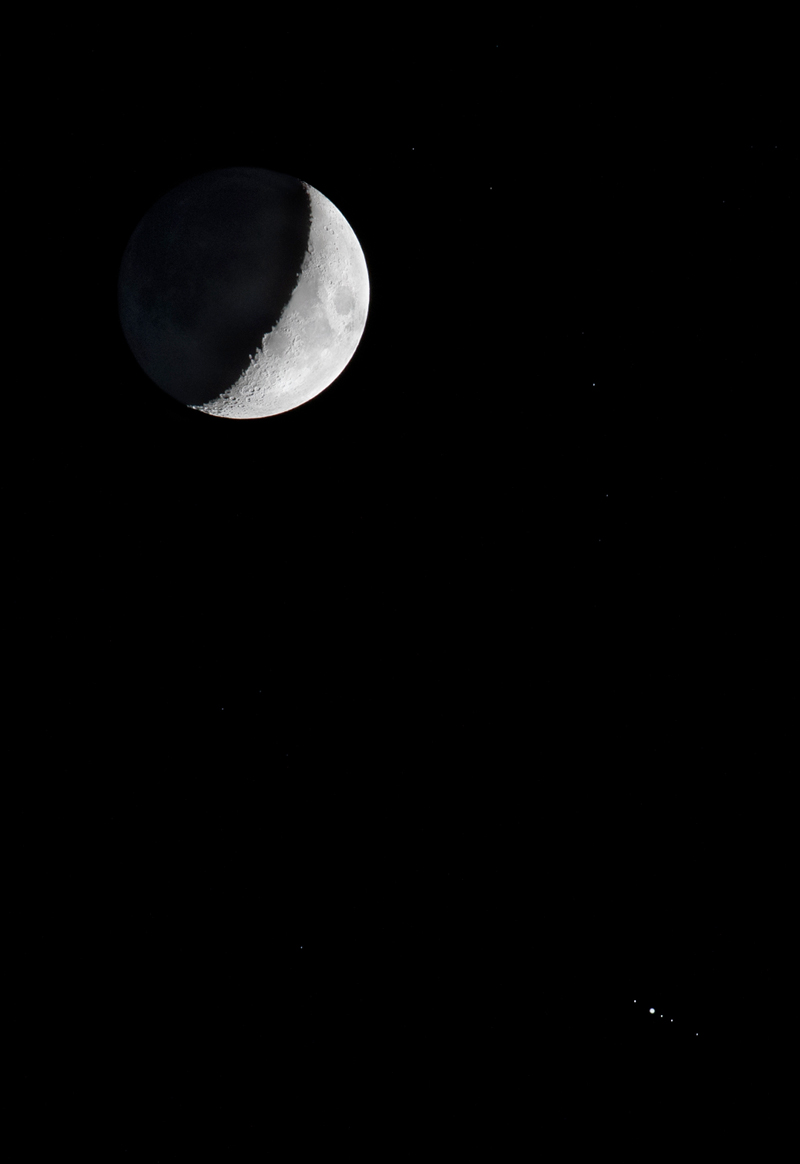2019 October 5
Jupiter and the Moons
Image Credit & Copyright: Derek Demeter (Emil Buehler Planetarium)
Explanation: After sunset on October 3, some of the Solar System’s largest moons stood low along the western horizon with the largest planet. Just after nightfall, a pairing of the Moon approaching first quarter phase and Jupiter was captured in this telephoto field of view. A blend of short and long exposures, it reveals the familiar face of our fair planet’s own large natural satellite in stark sunlight and faint earthshine. At lower right are the ruling gas giant and its four Galilean moons. Left to right, the tiny pinpricks of light are Ganymede, [Jupiter], Io, Europa, and Callisto. Our own natural satellite appears to loom large because it’s close, but Ganymede, Io, and Callisto are actually larger than Earth’s Moon. Water world Europa is only slightly smaller. Of the Solar System’s six largest planetary satellites, only Saturn’s moon Titan, is missing from this scene. But be sure to check for large moons in your sky tonight.
木星与卫星
影像提供与版权: Derek Demeter (Emil Buehler Planetarium)
说明: 在10月3日的日落后,太阳系最大的气态巨行星(木星)及数颗最大的卫星,低悬在西方地平面的上方。这幅摄于那个初晚时分的长焦镜头镜影像,捕捉到上弦月和附近的木星。影像结合了短和长曝光数据,以呈现地球最大的天然卫星─月亮,明亮的日曜区和受暗淡地照光照耀的夜面。在影像的右下方,则有木星和它的四颗伽利略卫星。由左至右,这些细小尖针状的亮点分别是木卫三、[木星]、木卫一、木卫二、和木卫四。月亮之所看来庞大无比,只是因为它离我们最近,事实上,木卫三、木卫一和木卫四都比它大,只有木卫二这颗水卫星比它小一点。而在太阳系六颗最大的卫星之中,只有土星的土卫六不在这幅影像里。最后,今晚别忘了走出户外去观赏这些大卫星。







